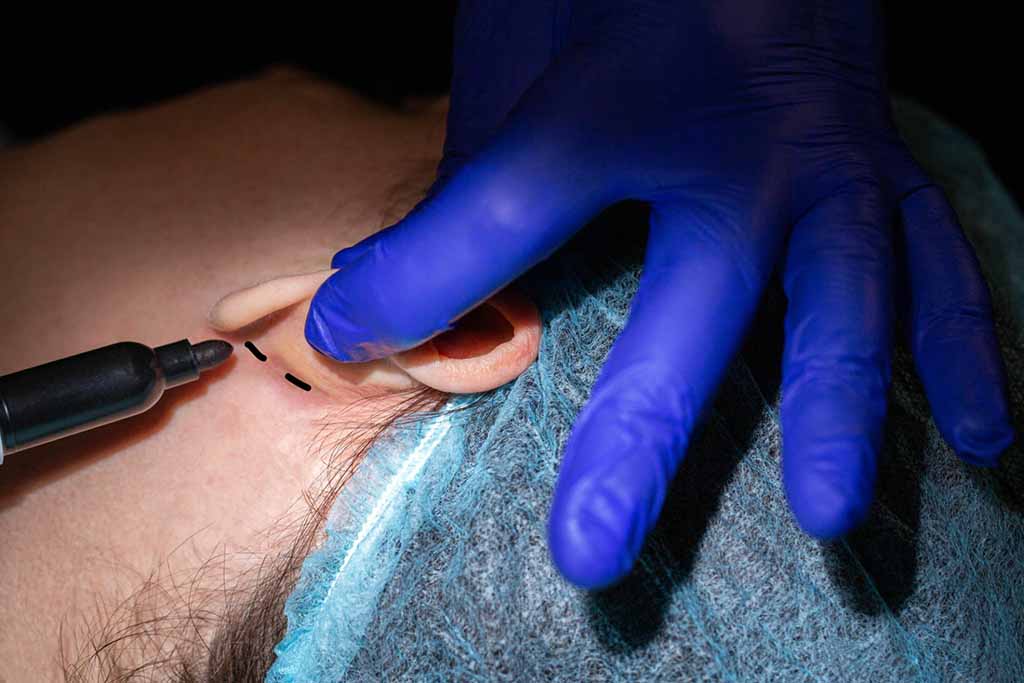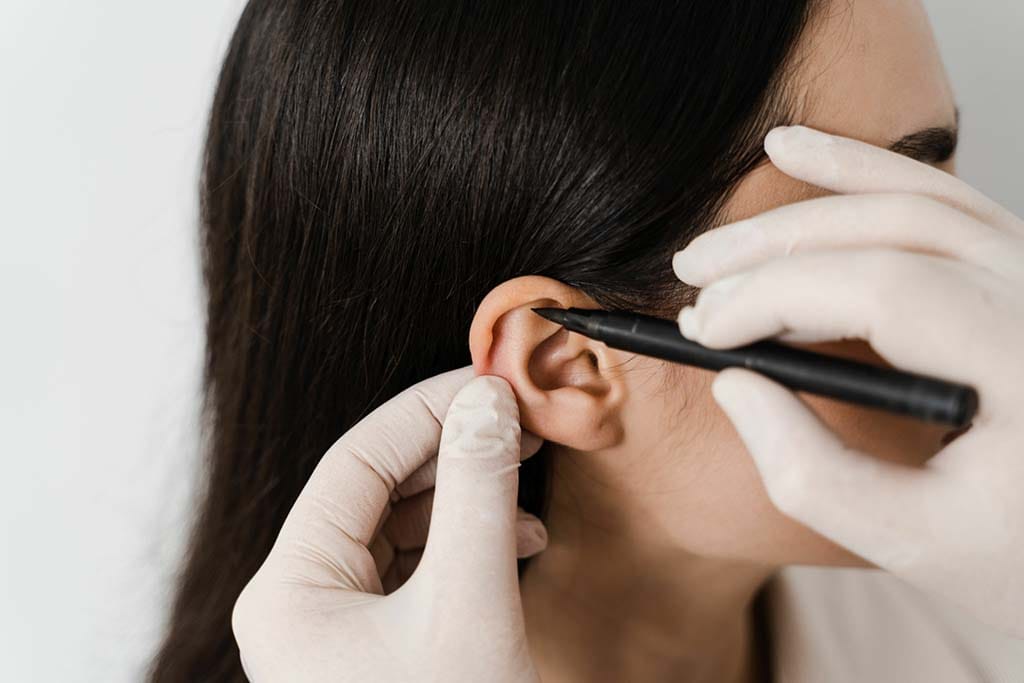This article is reviewed, corrected, and approved by: Julia Weiss CNP| RN | MPH
Have you ever heard about a special kind of surgery that can change the way someone's ears look? It's called ear surgery or otoplasty. This surgery is like a magic trick that helps fix ears that might stick out too much or have a different shape.
Let's take a peek at how otoplasty works and why it's essential to show how ears can change before and after the surgery.
What's Otoplasty?
Otoplasty is a type of surgery that helps fix the shape, position, or size of someone's ears. It's a bit like an artist reshaping clay to make something look just right. People might want otoplasty for different reasons, like feeling unhappy about how their ears look or getting teased or bullied by others.
A Brief Overview of Ear Surgery
When a person decides to have otoplasty, a special doctor called a plastic surgeon helps them. The surgeon explained what would happen during the surgery and talked about what could go right or wrong. They also share how otoplasty can help people feel more confident and happy with their ears.
Benefits of Otoplasty
There are some advantages and disadvantages of getting otoplasty surgery. Here are some
- Improved Appearance: Otoplasty helps reshape and reposition ears, enhancing their appearance to look more balanced and harmonious with facial features.
- Increased Confidence: By addressing concerns about prominent or misshapen ears, otoplasty often boosts self-esteem and confidence.
- Correcting Protrusion: The surgery can fix ears that stick out too far from the head, creating a more natural and less noticeable appearance.
- Personal Satisfaction: Many people who undergo otoplasty report feeling happier and more satisfied with their appearance post-surgery.
- Psychological Well-being: Fixing ear shape concerns can positively impact emotional well-being, reducing anxiety or distress related to appearance.
- Social Comfort: Reshaping ears through otoplasty can lead to increased comfort in social situations, diminishing potential teasing or self-consciousness.
- Long-Term Results: Otoplasty typically provides long-lasting or permanent results. Offering a lasting solution to ear shape and position concerns.
- Customization: The surgery can be tailored to meet individual preferences, allowing patients to achieve their desired ear appearance.
Downside of Otoplasty
Just like any beneficial undertaking, otoplasty isn't without its negative aspects.
- There are risks of infection, bleeding, anesthesia reactions. Or unsatisfactory results associated with any surgery.
- Post-surgery, discomfort, pain, swelling, or bruising around the ears may occur.
- The perfect symmetry of the ears may not always be achieved, and slight irregularities in shape or position may be present.
Ear Surgery Before And After Story

Before the surgery, some people might feel sad or worried about their ears. Sometimes, ears that stick out a lot can make people feel shy or not as confident. But during the surgery, the doctor uses special tools and sometimes medicine to help the person not feel anything.
After the surgery, the person needs to take good care of their ears while they heal, a bit like taking care of a flower so it grows well.
What to Expect Otoplasty Before and After?
Before the surgery, the person meets with the doctor to talk about what they want. It's like making a plan for a big project!
Before undergoing otoplasty, it is necessary to have a consultation with a plastic surgeon. So, in this meeting, you'll chat about what you want to achieve and what you're hoping for from the procedure. The surgeon will examine your ears and discuss the surgical technique that will be used.
They will answer any questions you have about the procedure. In the weeks leading up to surgery, you may be asked to avoid smoking and alcohol. You may also need to stop taking certain medications, such as aspirin or blood thinners.
During The Otoplasty Procedure
Otoplasty is typically performed under general anesthesia. The procedure usually takes two to three hours. It could be more or less. Doctor will create an opening at the back of the ear throughout the procedure.
They will then reshape the cartilage of the ear to achieve the desired result. In some cases, the surgeon may also remove excess skin from the ear (if needed).
What to Expect After Otoplasty?

After otoplasty, you will need to wear a bandage over your ears for a few days. Make sure you take it easy and steer clear of any intense physical stuff for a couple of weeks.
Most people experience some pain and discomfort after otoplasty. This can typically be controlled with pain medication.
The swelling and bruising from otoplasty will gradually subside over a few weeks. Most scars from otoplasty are well-hidden behind the ear. Before and after photos can be a helpful way to see the results of otoplasty. However, it is important to remember that everyone heals differently. So your results may not be exactly the same as the photos you see.
Important Things to Know!
Sometimes, things might not go exactly as planned, like with any special project. The doctor talks about these things before the surgery.
It's also really, really important to find a doctor who knows a lot about otoplasty. It's completely okay to ask questions and discuss what the person expects after the surgery.
Ending remarks
Otoplasty is like a magical gift for someone who wants to feel better about their ears. It's important for people to know they have choices and can make their ears look the way they want. If someone's thinking about otoplasty, talking to a special doctor is the best first step. Remember, it's like creating a beautiful masterpiece, one ear at a time!
Frequently Asked Questions
Q: How long does the otoplasty recovery time take?
Ans: otoplasty recovery usually takes a few days to several weeks, depending on the patient's health.
Q: How long does otoplasty last?
Ans: The cost of otoplasty depends on the surgeon's location, expertise, etc. In most cases, the results are long-lasting and are considered to be permanent.


